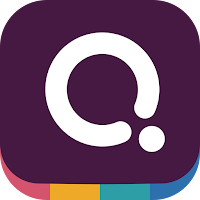Week 5: Audio
Often times we ask our students to write down their answers. However, our voice is one of the most powerful tools we possess and it should be emphasized more often.
Audio a viable option for all classrooms. It is easy to integrate into current lessons and there are many free online tools. Here are a few audio tools that I was introduced to this weekend by the amazing presenter, Carrie Day, and what she has to say about each of them:
Vocaroo This is the simplest of all of the recording tools. To record you simply go to Vocaroo.com, hit the recording button, and start talking. When you're done speaking you can download the recording as an MP3 or share it online by distributing the link assigned to your recording or by embedding it into a blog or website. The limitation of Vocaroo is the lack of an option to edit your recording.
Audio is a powerful tool and can be used to enhance the classroom. At the Alaska Society for Technology in Education (ASTE) conference this weekend I have learned about many ways audio could be used to give students the opportunity to use different senses and skills during a lesson and improve their learning.
I wanted to share with all of you some of the great examples, that were shared at ASTE, of ways audio could be implemented in the classroom:
- Audio clips could be added to a lesson from historical time periods to add context
- Allow students to submit audio reflections about a lesson to assist with assimilating new information into long-term memory - Like Flipgrid (which I have posted about before)
- Teacher given audio feedback has proven to be very powerful; learners know the teacher is speaking directly to them and give more attention to the feedback
- Listening to a podcast sustains student interest longer than reading a textbook or watching a recorded lesson
- Allowing students to create your own podcast enhances their education by giving them control of their learning
- Audio has proven to be a successful tool for differentiating to reach every student, including those with special needs.
Twisted Wave - Through this tool you can create and edit spoken audio recordings from scratch. Your completed tracks can be exported to Google Drive. If you have existing audio tracks in your Google Drive account you can also import it into TwistedWave to edit those audio tracks.
Audacity - Audacity is a free, open-source program for recording and editing audio. For classroom podcasting projects or other classroom audio recording projects, it is hard to beat Audacity.
Carrie also share a great resource for note taking. It's a free chrome app called Mic Note which allows you to create voice recordings, text notes, and image-based notes on one concise notebook page. You can also sync all of your notes to your Google Drive.
Note taking is a skill that I have noticed my students are lacking and I am particularly excited to share this resource with them.
I have been learning so much at ASTE. I am looking forward to getting home and getting started with my students!
I have been learning so much at ASTE. I am looking forward to getting home and getting started with my students!



Heather, great post! That's amazing that you got to attend the conference. We don't often think about the impact that our voice and spoken word has on a child. Last year, I created my own vocabulary videos for my class and they LOVED that I was the one who created the sentences and explained the definitions to them. We overlook the personal connection that could be made with our spoken word. I never thought about audio feedback for students. I can see my students getting such a kick out of that. After learning about audio at this conference, what specific tools are you eager to try with your students?
ReplyDeleteI have used some of these but others are new. I agree that adding audio to feedback on assignments has a more favored response in feedback and growth of understanding . I am going to try some of these out especially since I have 3 more weeks of no typing.
ReplyDeleteHi Heather thank you for sharing some gems from ASTE, I wish I would have known about that as it would have made a great place to explore what educators and providers are showcasing for 2019. It happened right here in Anchorage...oh well perhaps next year! I explored all of the audio apps above and they are easy to use and get up running quickly. Cool thing about audio is that the file sizes are usually smaller so uploading and sharing is not too cumbersome. I would also add that investment into a decent microphone can really improve quality especially for longer segments however for that quick audio feedback for a student smart phone mics work great! For myself the audio is usually captured in a screen recording software like Camtasia for a tutorial walk through of an application or training.
ReplyDeleteThese sound like great tools. Being an audio learner myself, these fit in with what I think all teachers should include in their lessons, sound.
ReplyDelete